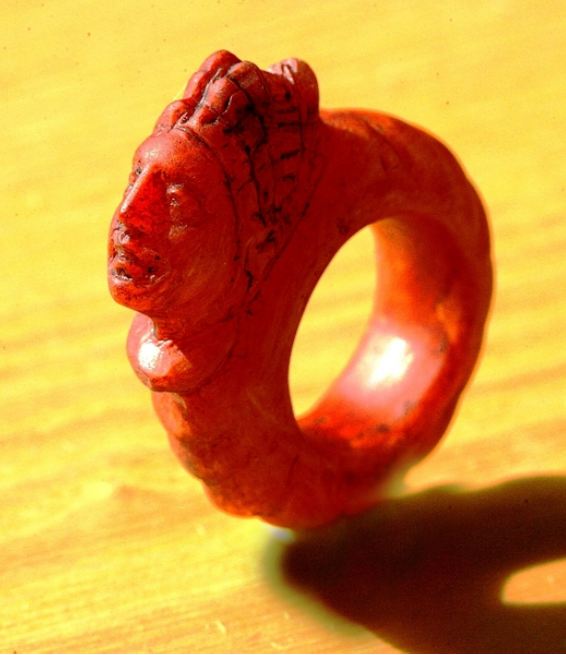| Main » Articles » About Baltic Amber |
 6000 year old traditions show amber prevalence and respect of people, who lived on the Baltic Sea coast (Lithuania and the Kaliningrad area). At first these traditions were created by ancient inhabitants of the Baltic coast, and Balts since 2000-1800 BC. In Lithuania the oldest findings of amber are of Neolithic period (4000-1600 BC). Neolithic amber jewellery - pendants, beads, buttons, amulets - were discovered in the former settlements near the Baltic Sea (Curonian Spit, Palanga, Šventoji and Prussia). The first biggest amber treasure was found while dredging amber in the Curonian Lagoon in the vicinity of Juodkrantė in 1860-1881. Scientists from all over the world got interested in unique New Stone Age decorative amber objects dating back to the 3rd millennium B.C. This is the famous R. Klebs collection called Juodkrantė’s Treasure. It consists of raw amber and 434 complete handicraft articles. The collection contains many pendants of different forms: long and narrow, regular with an oblique base, almost rectangular and oval. There were different buttons found: small round and oval, up to 4,5 cm long, big boat-shaped; some of them had plain surface, others were decorated with dots. Also, there were found different tube-shaped beads with straight to slightly curved sides that had surface ranging from lightly retouched to highly polished, and many links and disks. New Stone Age plastic art objects (amber statuettes of people and animals) are an exceptionally valuable part of this collection. All these objects were described and published in R. Klebs’s book "Amber jewellery of Stone Age" in 1882. Count F. V. Tiškevičius dug amber in the wetlands near Palanga. Raw amber contained just a few hundred kilograms, but during the work there has been collected number of archaeological findings (Palanga’s Treasue). Some articles of Palanga’s Treasure are similar to articles of Juodkrantė’s Treasure. They are ornamented with points, strips, and holes. One article of this treasure depicts a schematic man. One foot is fractured. In the upper part of the figure – the head – a hole is drilled. This shows that it was worn as an amulet. This figure like the shield shaped pendants, buttons with the V shaped holes and cylindrical beads are of Neolithic period. Other articles of Palanga’s Treasure: necklace-discs, wheel-spindles and a number of pendants are from later time that reaches even the Brass and Iron Age. Similar treasure was found near Šventoji while excavating Neolithic camps. These 20 years of excavations were carried out by Dr. R. Rimantienė. And that is how the Stone Age amber treasure of Šventoji was collected. This treasure gave new information about life of people, who lived on the seacoast. In the 4th millennium BC Narva culture population wore amber jewellery. People drilled a hole in a piece of amber and had a pendant; they produced small buttons, figurines, amber tubular beads, although to get the tube shape they had to put a lot of effort. At that time colourful amber was not valued, which is contrary to our nowadays choice. Lots of them were found just dropped and broken. Then people particularly liked one-colour, smooth, honey-coloured amber. In the 3rd millennium BC amber workshops began to set up on present territory of Lithuania. One of them was found near Šventoji, where pendants and buttons were manufactured for northerners, who lived in the current Estonia, Finland, and Novgorod areas. The most interesting articles they produced to themselves. It was not only jewellery. Scientists are still making suppositions about the meaning of figurines of people and animals. It is estimated that for fishermen and hunters they meant the guardians of life – Gods of the world. Also, they could serve as amulets. On the Curonian Spit, 4 km north from Pervalka raw amber treasure was found. This amber was collected in the beginning of the early Bronze Age: 13 sizable pieces, each weighing about 600 grams. They were lighter than the same sized amber pieces, which were found on the seacoast because they lied on the surface of the sand dunes for a long time, got a lot of oxidation and became porous. Not far from this raw amber treasure on the coast were identified culture-specific Rope ceramics, fine flint and burnt wood coal. As a result, finding dates back to 1800-1600 BC. Comparatively sparing raw amber and its products confirm that Neolithic and Bronze Age coastal population widely used amber in jewellery; for others amber had not only ornamental, but also magic value. Baltic
Amber in Stone Age Source: http://www.ambergallery.lt/en/disp.php?itm=en_museums_3%2Fen_museums_3_10%2Fen_museums_3_10_2
| |||||||||||||||||
| Views: 1869 | Comments: 1 | Rating: 5.0/1 | |||||||||||||||||
| Total comments: 0 | |









